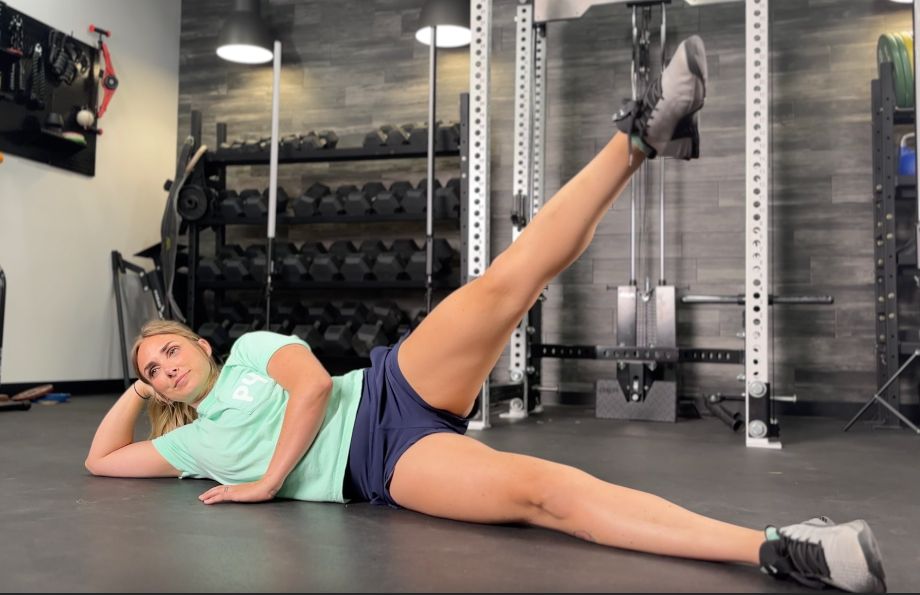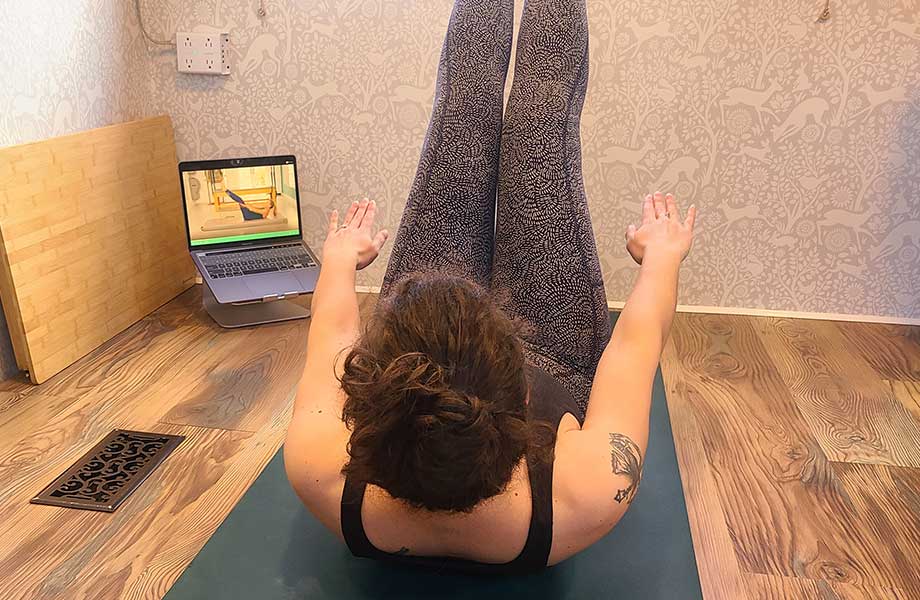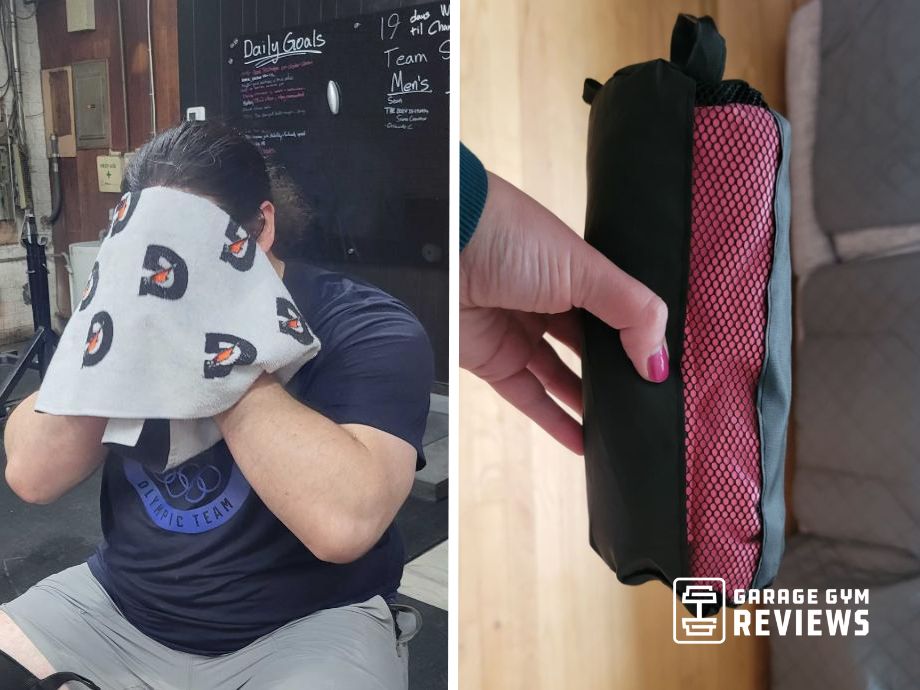Pilates is a form of exercise, specifically strength training, developed by Joseph Pilates in the early 20th century. While lovers of this practice have long espoused the many benefits—such as building lean muscle, improved mental health, and total-body strength training—some research (which we’ll examine below) also suggests you can try Pilates for weight loss.
Weight loss is far from the only reason to try a Pilates workout. Pilates boasts potential health benefits like increasing muscle tone, strengthening your psoas muscles, and building powerful core muscles, among many others. While it’s certainly possible to burn calories, diminish belly fat, and sculpt your glutes while doing a Pilates workout, there’s more to it when it comes to Pilates and weight loss.
In this article, we’ll look at how starting a home Pilates practice or attending a regular class may help you achieve (or maintain) a healthy weight and healthy lifestyle.
Editor’s Note and Medical Disclaimer: This article is intended for educational and informational purposes only. It is not intended as a substitute for medical advice. Weight loss programs are not recommended for people with a history of disordered eating. For health advice, contact a licensed healthcare provider. If you need help with disordered eating, contact NEDA.
What Is Pilates?
Pilates is a practice of strength training that builds core strength and focuses on slow and controlled movements. Pilates is a series of low-impact exercises that emphasize the alignment of your skeletal structure, which helps avoid injury and reduce joint stress, particularly in practitioners who may be overweight.
There are two main types of Pilates—one that can be done simply on an exercise mat or yoga mat (“mat Pilates”) and the other on a Pilates reformer (aptly named “Reformer Pilates”). You can do Pilates at home or in a studio class with a certified Pilates instructor.

“What’s the reformer?” you ask. It’s a medieval-looking machine that may strike fear and intimidation into some beginner, home practitioners’ hearts, but rest assured, a regular Pilates practice requires no equipment to build strength and balance. It can also play a part in helping you reach your weight loss goals.
RELATED: Best Pilates Socks
How Can Pilates Aid Weight Loss?
Pilates is a full-body workout targeting all muscle groups with slow, controlled movements. Pilates helps to build strength by incorporating bodyweight resistance training and promoting proper alignment, which helps prevent injury. Staying injury-free is critical when pursuing weight loss, as it keeps your physical activity consistent. That said, Pilates is an anaerobic activity, which is excellent for building muscle, but this may mean you’ll want to pair it with an aerobic cardiovascular activity that burns calories faster—like running, bicycling, or swimming—and a particular meal plan while you’re pursuing weight loss.
RELATED: Cardiovascular Fitness

As for what the research says, a March 2021 meta-analysis from Frontiers in Physiology1 found that Pilates can be effective for weight loss and is particularly effective for those who are considered overweight. The meta-analysis noted that those who were overweight “…dramatically reduced body weight, BMI, and body fat percentage” throughout an eight-week Pilates practice during which participants practiced Pilates for ninety-minute sessions three times weekly.
How Often Should You Do Pilates For Weight Loss?
The 2021 study above suggests that three times weekly for ninety minutes can achieve the best results. Depending on your daily schedule and current physical activity levels, ninety minutes can be a lot to commit to for your regular exercise routine. We recommend starting small and working your way up.
According to the CDC2, five thirty-minute weekly sessions are recommended for adults to maintain a healthy lifestyle. Because Pilates is low-impact, providing less stress on your joints, it requires less recovery time than higher-impact exercises like running or HIIT workouts, which means you can practice it more frequently.
Benefits of Pilates For Weight Loss
Pilates is an exercise routine that focuses on core strength and alignment. Combined with its low-impact nature, Pilates is a relatively injury-preventative workout. Many people who practice Pilates report relief in their chronic low-back pain, which could be in part due to the strengthening of the core muscles that help support your lower back—just one of the many reasons Pilates can easily fit into a healthy lifestyle. Here are a few more:
Can Be Accessible for Busy Schedules and All Fitness Levels
You can do Pilates exercises at home with little to no equipment, meaning you can practice Pilates daily as a home workout if you prefer. The movements are also simple, which is not to be confused with easy! An accessible workout can be easier to repeat and may help you establish a consistent routine while building lean muscle mass.
Helps Improve Balance, Stability, and Core Strength
Balance and stability are great for regular training but are also imperative to longevity and a healthy lifestyle. Of the many health benefits of developing core strength, the top two are alleviating lower back pain and reducing the risk of falling in healthy older adults3.

RELATED: Balance Exercises
Another major perk of improved core strength from Pilates is better posture4. Often overlooked, posture is, in our opinion, an underrated aspect of wellness. With better core strength, especially in the core muscles in your lower back, comes more access to sitting and standing tall—hopefully eliminating computer hunch—and presenting a more confident, strong body to the world.
Easier on Your Muscles and Joints
As we’ve established, Pilates is considered a low-impact workout, which means these exercises increase your heart rate more slowly than a higher-intensity workout and put less pressure on your joints (as an example, running is a high-intensity workout because it gets your heart rate up quickly and can have a greater impact on frequently strained lower-body joints like your knees and ankles). Beginners or those with higher BMIs can benefit from low-impact workouts as less strain will be placed on the joints, allowing them to build strength and stamina and recover faster after training.
Pilates For Weight Loss: Final Thoughts
Weight loss takes time and is most successful when a regimen consisting of a healthy diet combined with a calorie deficit and regular exercise is being followed. This is why choosing a physical activity you can stick with day after day is important.
Pilates is a great choice if:
- You’re looking for a low-impact yet challenging routine you can come back to daily.
- You need a break from the traditional workout split and want a total-body challenge.
- You need more variety in your training regimen: There’s plenty of variety available with the endless resources available such as virtual and in-person Pilates classes, reformer Pilates classes, or even “Piloxing”— a blend of boxing and Pilates that incorporates cardio into a Pilates workout.
RELATED: Best Pilates App
Pilates For Weight Loss: FAQs
Is 30 minutes of Pilates a day enough to lose weight?
In short: yes, it can be.
The standard recommendation for losing weight is performing about 150 minutes of moderate exercise on a weekly basis. This translates to about five 30-minute sessions per week. Depending on your schedule, you may also consider longer sessions for fewer days.
In a small November 2017 study published in the Journal of Sports Medicine and Physical Fitness5, researchers found that women who practiced Pilates for ninety minutes a day, three times weekly experienced decreases in their body fat percentage, waist circumference, and overall weight after eight weeks.
Can Pilates change your body shape?
According to a 2012 study in the Journal of Bodywork & Movement Therapies6, there’s some evidence that Pilates can affect your body composition, however there’s not enough conclusive data to make that statement a fact. The study suggests a 60-minute practice of Pilates two to three times a week for six to eight weeks may contribute to changes in your body mass.
Is Pilates or yoga better for weight loss?
There are different types of yoga and Pilates, and exercises may overlap between the two forms of movement. That said, almost every Pilates practice features elements that help weight loss, whereas not all yoga classes will. Yoga practices like restorative or Yin won’t be appropriate for weight loss, but heated vinyasa classes and Hatha practices can be very beneficial if losing weight is your goal. Both can be good for weight loss, so choosing one over the other will depend on your goals and preferences.
References
- Wang, Y., Chen, Z., Wu, Z., Ye, X., & Xu, X. (2021). Pilates for Overweight or Obesity: A Meta-Analysis. Frontiers in physiology, 12, 643455. https://doi.org/10.3389/fphys.2021.643455
- Centers for Disease Control and Prevention. (n.d.). Physical activity for adults: An overview. Centers for Disease Control and Prevention. https://www.cdc.gov/physical-activity-basics/guidelines/adults.html
- da Silva, L. D., Shiel, A., & McIntosh, C. (2021). Pilates Reducing Falls Risk Factors in Healthy Older Adults: A Systematic Review and Meta-Analysis. Frontiers in medicine, 8, 708883. https://doi.org/10.3389/fmed.2021.708883
- Lee, H. T., Oh, H. O., Han, H. S., Jin, K. Y., & Roh, H. L. (2016). Effect of mat pilates exercise on postural alignment and body composition of middle-aged women. Journal of physical therapy science, 28(6), 1691–1695. https://doi.org/10.1589/jpts.28.1691
- Şavkin, R., & Aslan, U. B. (2017). The effect of Pilates exercise on body composition in sedentary overweight and obese women. The Journal of sports medicine and physical fitness, 57(11), 1464–1470. https://doi.org/10.23736/S0022-4707.16.06465-3
- Aladro-Gonzalvo, Arian & Machado-Díaz, Míriam & Moncada-Jiménez, José & Hernandez-Elizondo, Jessenia & Araya-Vargas, Gerardo A.. (2012). The effect of Pilates exercises on body composition: A systematic review. Journal of bodywork and movement therapies. 16. 109-14. 10.1016/j.jbmt.2011.06.001.






